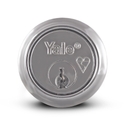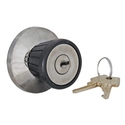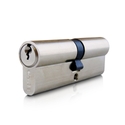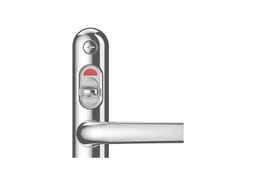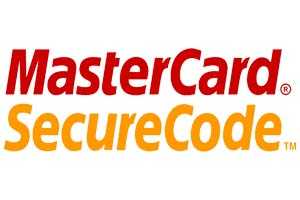The ultimate guide to locks
February 03, 2021
Written by Jeff Seymour
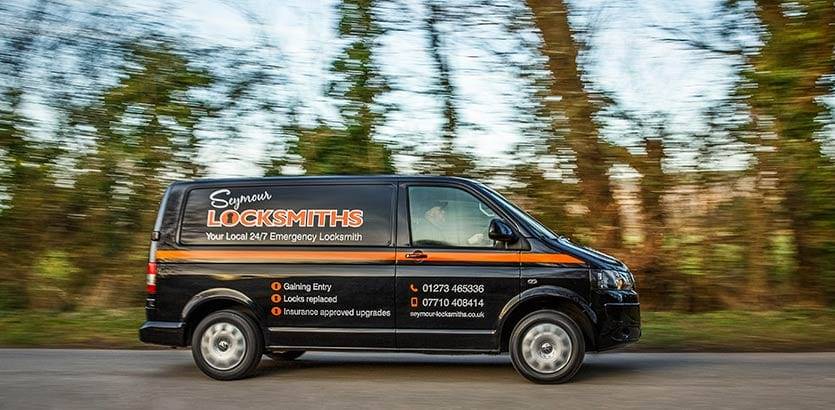
WHAT IS A PADLOCK?
Padlocks are portable locks with a shackle that can be passed through an opening to prevent use. They are one of the most common locks that use a cylinder and pin combination. Based on a mechanism that was invented in ancient Egypt, it became a winning invention in the mid 19th century because of the American inventor Linus Yale and the Yale company named after him.
ADVANTAGES OF USING A PADLOCK
- Padlocks are portable.
- They come in a variety of sizes, allowing for many different uses.
- Padlocks come with the option to use either a key or a combination.
- Can be keyed alike meaning you can use the same key for multiple padlocks.
DISADVANTAGES OF USING A PADLOCK
- Low-end padlocks are very insecure and can be broken within a matter of seconds.
- Combination padlocks are extremely vulnerable to lock picking.
RIM CYLINDERS
WHAT IS A RIM CYLINDER?
A Rim Cylinder is a pin and tumbler type of lock that uses different length pins in conjunction with a key to match the pin set up. Linus Yale Jr patented the pin and tumbler lock we now see today in most Rim Cylinders. A Rim Cylinder is commonly used to operate a Night Latch.
ADVANTAGES OF USING A RIM CYLINDER
- Rim Cylinders can be changed without having to replace the night latch, saving you money when you want to change the lock.
- Rim Cylinders can be upgraded to British Standard cylinders, giving you more security and conforming with insurance standards.
- Comes in two different finishes, brass and silver allowing you to match the finish with the other door hardware such as letterboxes and door knockers.
DISADVANTAGES OF USING A RIM CYLINDER
Low-cost Rim Cylinders can be picked reasonably easy, having a British Standard Rim Cylinder will secure your home better and will comply with your home insurance requirements.
When fitted to a wooden door a Rim Cylinder alone is not ample security and should be used alongside a deadlock.
MORTICE LOCKS, DEADLOCKS AND SASHLOCKS
WHAT IS A MORTICE LOCK?
A Mortice Lock sits on the inside of a wooden door. When the door is closed a key is used to throw a bolt into the keep that is fixed to the door frame. The key operates levers within the lock body, as the key is turned the levers are lifted to a set point allowing the bolt to be thrown into the keep.
Mortice locks are known as Deadlocks or Sashlocks, these types of locks have been in use since the mid 18th century. A Sashlock is the same as a Deadlock apart from it has a latch that is worked by handles. The door can be closed on the latch and still be deadbolted using a key.
ADVANTAGES OF USING A MORTICE LOCK
- Mortice Locks use a lever system which is more secure than other options such as a pin and tumbler system.
- Easy to change when locks need replacing.
- Comes in many assorted sizes and finishes.
- Using a British Standard Mortice Lock makes you compliant with your insurance requirements.
DISADVANTAGES OF USING A MORTICE LOCK
- Mortice Lock keys are large making them awkward to carry.
- No automatic locking option.
- Can’t be installed on doors with a thickness less than 35mm
DEADLOCK CASE
WHAT IS DEADLOCK CASE
The functionality of a Deadlock Case is the same as a Deadlock/mortice lock (as written about in the section above) but with one main difference, the bolt is thrown by a cylinder and not levers. The cylinder is separate from the deadbolt case. This type of lock is commonly used on interior doors that need to be locked at all times. In the U.K. it is a legal requirement for all Deadlock Cases to be installed with a thumb-turn cylinder when used on internal doors.
ADVANTAGES OF USING A DEADLOCK CASE
- The cylinder can be changed without having to change the Deadlock Case.
- A master key can be used as well as separate keys.
- They come in a wide variety of finishes allowing them to be suited to the same style as the rest of the building.
DISADVANTAGES OF USING A DEADLOCK CASE
- Not as secure as a traditional Deadlock that uses levers to operate the deadbolt.
- Can’t be installed on doors with a thickness less than 35mm.
- Difficult and complex to fit.
KEY IN KNOB CYLINDERS
WHAT IS A KEY IN KNOB CYLINDER?
A Key in Knob Cylinder is a doorknob/handle that has the cylinder lock situated within the handle. This type of lock was first patented in 1878 by Osborn Dorsey an African American inventor. Today we still use the same fundamental design from this period and these can mainly be found on internal doors in buildings across Brighton.
ADVANTAGES OF USING A KEY IN KNOB CYLINDER
- The cheapest option on the market for internal door security.
- They come in a wide variety of finishes allowing them to be suited to the same style as the other handles in the building.
- They are easy to install.
DISADVANTAGES OF USING A KEY IN KNOB CYLINDER
- The majority of Key in Knob Cylinders are outdated and quickly suffer from wear and tear if the cylinder is in heavy use.
- Can be fiddly to operate and requires both hands for use.
- If they break, people can be trapped inside the building, unlike most other locks which can be overridden from the inside.
- To install a Key in Knob cylinder, a large hole has to be cut into the door at which point the door no longer becomes suitable for any other type of lock.
EURO CYLINDERS
WHAT IS A EURO CYLINDER?
A Euro Cylinder uses a pin and tumbler system with a key to match the pin set up. The tumbler system was first patented in 1805 it is commonly used today to operate lock cases that are designed for Euro cylinders. The cam that is within the cylinder operates a lever within the gearbox when turned with a key, that in turn moves the deadbolt.
ADVANTAGES OF USING A EURO CYLINDER
- British Standard and Star Rated Cylinders have a high level of security.
- The cylinder is separate to the multi-point locking system meaning it can be changed without having to change the whole system.
- Can be keyed alike meaning one key works for multiple cylinders.
- Euro Cylinders can be adapted to have a thumb turn instead of using a key.
- Euro Cylinder keys can be restricted meaning only the owner can have a copy of the keys cut.
- Using a British Standard Euro Cylinder makes you compliant with your insurance requirements.
DISADVANTAGES OF USING A EURO CYLINDER
- Euro Cylinders that aren’t British Standard or Star Rated have very poor security and can be broken into in under 15 seconds using the cylinder snapping attack method.
- For coastal residents, the sea air can be damaging to low-end Euro Cylinders causing wear and tear over time. The most common issue caused by this is jamming locks.
- Euro Cylinders can be damaged if keys are entered into the cylinder from both ends at the same time.
CAM LOCKS
WHAT IS A CAM LOCK?
A Cam Lock is a cylinder with a cam at one end, the cam is operated with a key. This type of lock uses wafers rather than pins. First patented by Philo Felter in 1868. This type of lock is commonly used on furniture for keeping drawers secure or filing cabinets.
In short, a cam is used to manipulate other parts of machinery to perform tasks. Cam locks are predominately used inside buildings that already have high-level security on the outer doors. This type of lock is commonly used on furniture for keeping drawers secure or filing cabinets.
ADVANTAGES OF USING A CAM LOCK
- Keeping valuables safe within the home or office.
- Comes in a wide variety of sizes.
- Makes for easy access while still having a level of security.
DISADVANTAGES OF USING A CAM LOCK
- Easy to picked.
- Easily forced open.
- Cam Lock keys are not unique.
LEVER HANDLE LOCKS
WHAT IS A LEVER HANDLE LOCK?
A lever handle lock is a door handle that can be locked using the handle. In some cases, a cylinder is not used. These are a relatively new approach to keeping doors locked.
ADVANTAGES OF USING A LEVER HANDLE LOCK
- Secure because it spans the whole door
- Ease of use because no keys are required.
- No keys to lose.
- Less maintenance because there’s no cylinder.
- Never have to change your cylinder.
DISADVANTAGES OF USING A LEVER HANDLE LOCK
- Can be expensive due to lower market availability.
- New to the market and have yet to gain long term credibility within the locksmithing industry.
- Non-child friendly as the lever can be worked by anyone from the inside.
MECHANICAL DIGITAL LOCKS
WHAT IS A MECHANICAL DIGITAL LOCK?
A Mechanical Digital Lock is a type of lock that does not use a cylinder, the lock is operated by using a combination code set by the user and entered on a numbered keypad. First invented in 1976 by Tor Sornes it paved the way for more sophisticated locking devices that we see today on many hospitality suits, known as smart locks.
ADVANTAGES OF USING A MECHANICAL DIGITAL LOCK
- No keys are required.
- Self-locking.
- Ideal for internal doors, such as office suites that need to be kept locked at all times and allow varying levels of access for employees.
- The code can be changed at any time allowing access to be revoked at a moments notice.
DISADVANTAGES OF USING A MECHANICAL DIGITAL LOCK
- Not ideal for outside because they’re easily damaged by bad weather such as salty air, rain and freezing temperatures. If used outside, wipe down the casing from time to time as the code can be read by seeing which buttons have worn over time due to being pressed.
- The door is held closed by a latch which is a much less secure option than other locks that use a deadbolt.
- Digital locks use latches instead of deadbolts meaning they are more susceptible to lock slipping.


